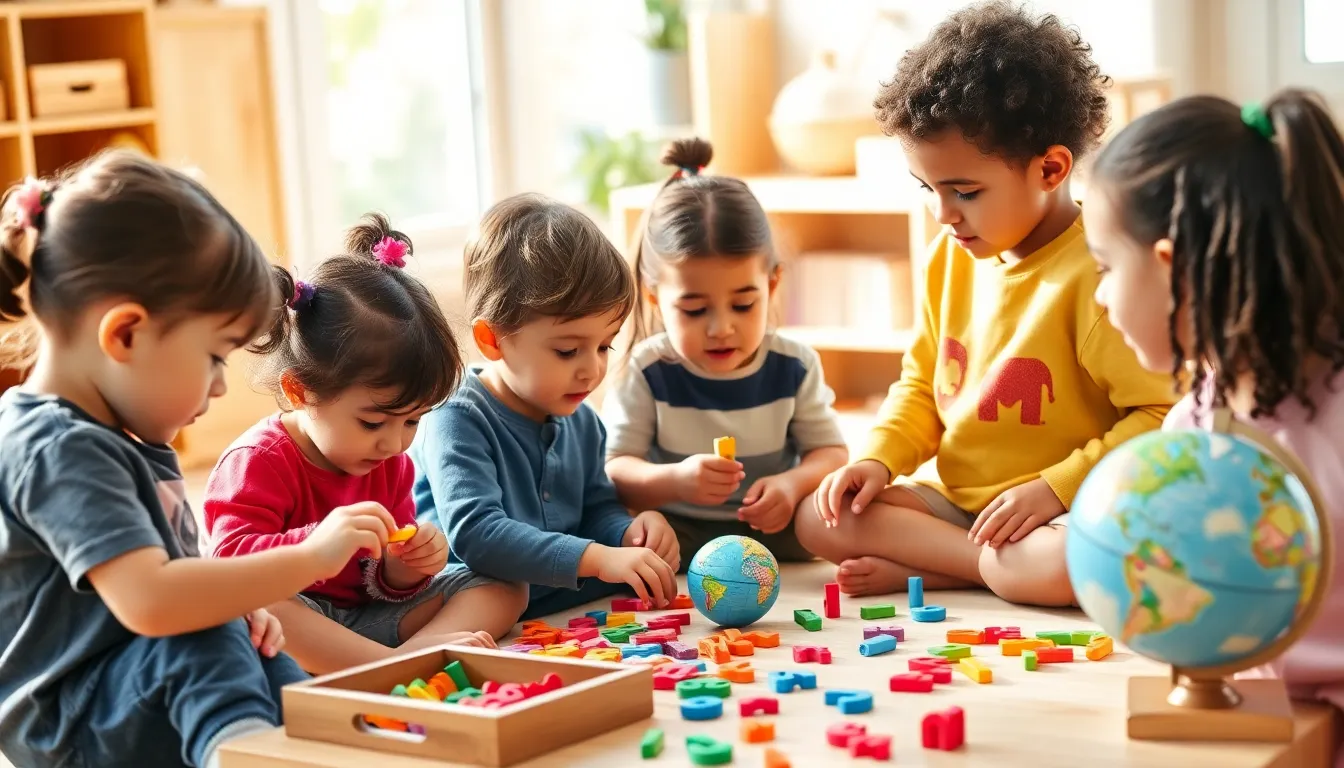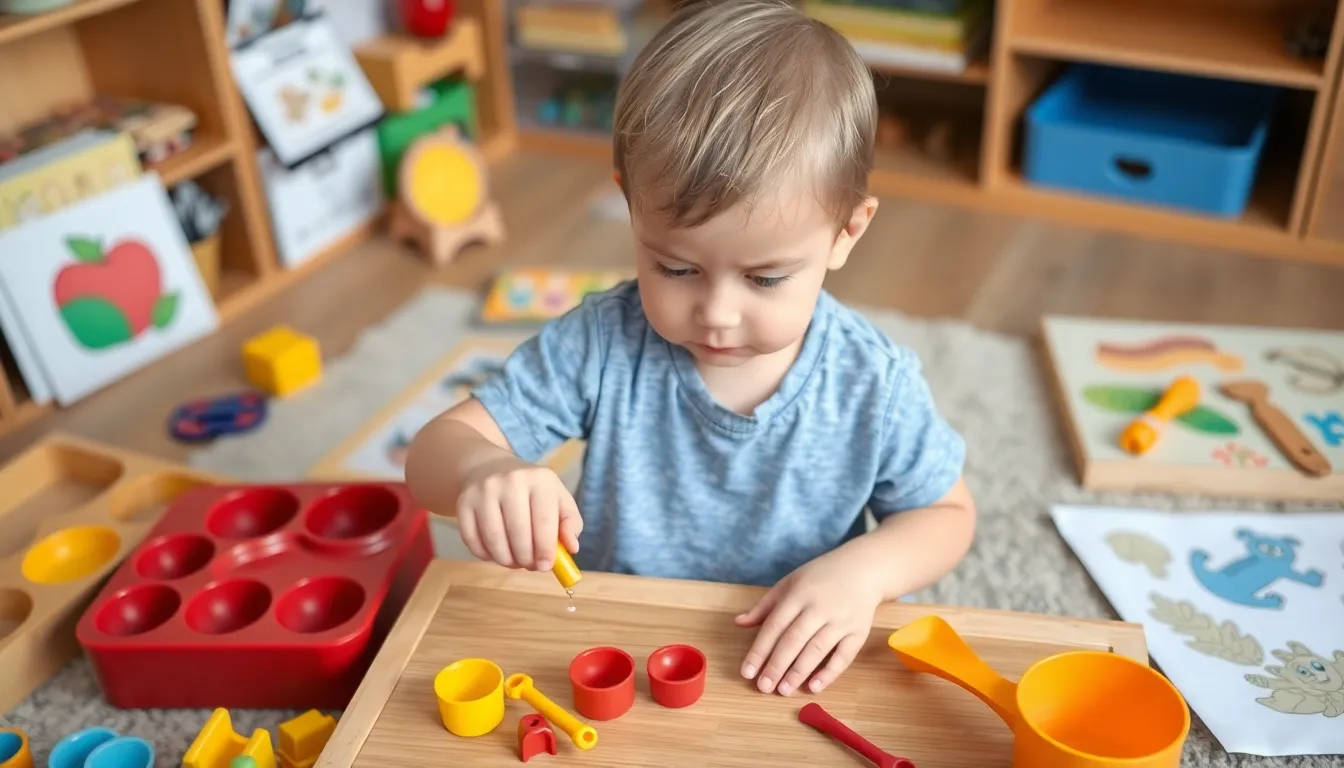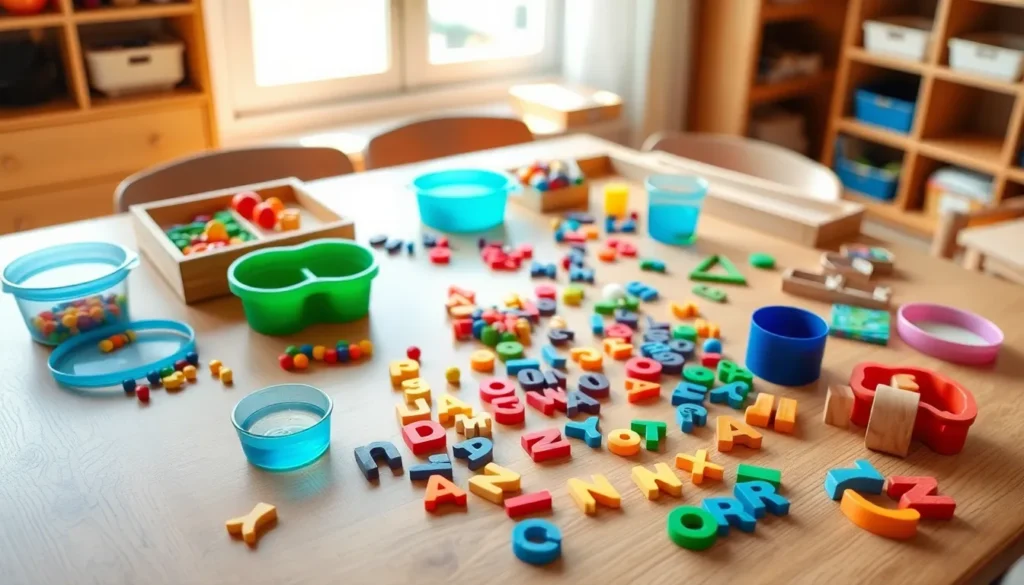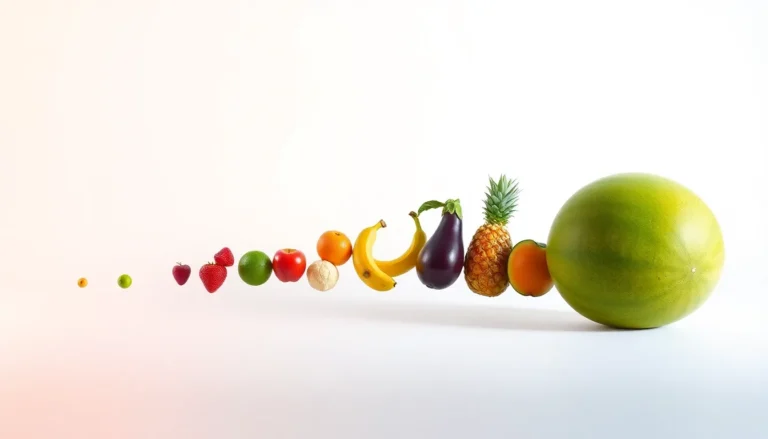When it comes to nurturing little minds, Montessori materials are the secret sauce that makes learning both fun and effective. Imagine a world where children explore, discover, and learn at their own pace, all while playing with colorful, engaging tools designed just for them. Sounds dreamy, right? Well, it’s not just a dream; it’s the Montessori method in action!
Table of Contents
ToggleOverview of Montessori Materials
Montessori materials serve as essential tools in early childhood education, designed to support hands-on learning. These materials include various items that promote exploration, independence, and critical thinking. They encourage children to engage in activities that cater to their developmental stages and interests.
Practical Life materials help children develop motor skills and self-care abilities. Children can use tools like pouring sets, dressing frames, and plant care items. Each item fosters responsibility and concentration, laying a foundation for everyday tasks.
Sensorial materials enhance perceptual skills through activity with the senses. Items such as sound boxes, color tablets, and texture globes allow children to distinguish differences in sound, color, and texture. This exploration leads to deeper awareness of the environment.
Mathematics materials introduce abstract concepts through tangible experience. Tools like number rods, bead frames, and fraction circles help children understand quantities, patterns, and mathematical relationships. Engaging with these materials makes complex ideas accessible and concrete.
Language materials build essential literacy skills. Children interact with phonetic objects, moveable alphabets, and sandpaper letters to develop reading and writing abilities. These tools make language learning interactive and multisensory.
Cultural materials broaden children’s understanding of the world. Globes, maps, and artifacts from various cultures introduce geography, history, and science topics. Exposure to diverse concepts fosters curiosity and respect for different cultures.
Montessori materials create an enriched learning environment. Their intentional design aligns with developmental principles, ensuring that children maintain focus and engagement. Effective use of these materials enhances the overall learning experience, making education a joyful journey.
Types of Montessori Materials


Montessori materials encompass a range of tools designed to enhance early childhood education through hands-on experience. Each type offers unique benefits, fostering exploration and independent learning.
Practical Life Materials
Practical life materials enhance motor skills and promote self-care abilities. Activities often include pouring, spooning, and buttoning, helping children develop control and coordination. These tools encourage responsibility by allowing kids to contribute to daily tasks. By reinforcing routines, they help children gain confidence in their abilities. Engaging with these materials also instills a sense of order, linking everyday tasks with learning.
Sensorial Materials
Sensorial materials focus on refining children’s perceptual skills. These tools encourage exploration of sight, sound, touch, taste, and smell. Examples include color tablets for visual discrimination and sound boxes for auditory differentiation. Engaging with these materials fosters attention to detail, vital for sensory development. Activities stimulate curiosity, making abstract concepts tangible and relatable.
Mathematics Materials
Mathematics materials introduce abstract concepts through concrete experiences. Children explore counting, addition, and subtraction with tools like beads and number rods. Manipulating these materials provides a tactile way to grasp mathematical principles. Understanding numerical relationships becomes easier through hands-on activities. Each interaction builds a strong foundation for future mathematical learning.
Language Materials
Language materials foster essential literacy skills in an interactive manner. These tools might include sandpaper letters, moveable alphabets, and grammar symbols. Each item facilitates phonetic awareness and letter recognition, promoting early reading skills. Children can engage with language structure through writing and storytelling activities. Immersion in these materials lays the groundwork for effective communication and literacy.
Cultural Materials
Cultural materials broaden children’s understanding of the world around them. These resources often include globes, maps, and artifacts from various cultures. They nurture curiosity, encouraging respect for diversity among peers. Exploring different cultures helps children develop empathy and social awareness. Engaging with cultural tools enriches their global perspective, integrating learning with real-world context.
Importance of Montessori Materials
Montessori materials play a crucial role in early childhood education. These tools foster creativity and cater to a child’s natural curiosity, promoting independent exploration. Engaging with these materials enhances cognitive and motor skills, creating a solid foundation for lifelong learning.
Hands-on activities boost a child’s confidence by encouraging mastery through practice. Each material has a specific purpose, designed to help children understand abstract concepts through tangible experiences. For example, practical life materials teach responsibility and order, essential skills in everyday life.
Sensorial materials refine a child’s ability to observe and categorize. By using tools that stimulate the senses, children learn to discern differences in color, texture, and sound. Such exploration cultivates critical thinking and problem-solving skills.
Mathematics materials introduce numerical concepts in an engaging manner. Items like beads and number rods facilitate understanding of quantities and relationships. Children grasp mathematical principles more effectively when interacting with concrete materials.
Language materials are essential for developing literacy skills. Tools such as sandpaper letters and moveable alphabets promote phonetic awareness and reading readiness. Engaging with these resources helps children build a strong linguistic foundation.
Cultural materials expand a child’s worldview. Resources like globes and maps encourage curiosity about diversity and other cultures. By exploring various concepts, children develop respect and appreciation for the world around them.
Overall, Montessori materials create an enriching educational environment. Each category supports a child’s development in unique ways, ensuring they remain engaged and focused. Prioritizing hands-on learning experiences is vital for nurturing young minds.
How to Choose Montessori Materials
Selecting Montessori materials requires careful thought to ensure they align with a child’s developmental needs. The right materials should engage children while promoting exploration, independence, and creativity.
Consider age appropriateness when choosing materials. Younger children benefit from practical life tools that develop motor skills, while older individuals may thrive with more complex math and language resources.
Evaluate the educational goals associated with each material. Items that emphasize sensory exploration, like sound boxes or color tablets, enhance perceptual skills, making abstract concepts tangible. Selecting a variety of materials fosters a well-rounded learning experience.
Examine the quality of materials as well. Durable, child-safe resources made from natural materials withstand use over time while encouraging responsibility and care. This focus on quality reinforces the Montessori philosophy of providing a beautiful, engaging environment for learning.
Review how well materials promote collaboration and social interaction. Tools that invite shared play, like puzzles or group activities, foster communication and teamwork skills, nurturing social development.
Prioritize versatility in materials as well. Choosing resources that serve multiple purposes allows children to explore different concepts and skills with the same item, maximizing learning opportunities.
Facilitating a connection between materials and interests strengthens a child’s engagement. When children relate to the tools around them, their motivation to learn increases, resulting in deeper exploration and understanding.




